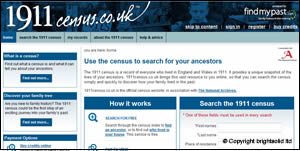The 1911 census has solved one of my long outstanding mysteries. I clicked on the request for other members of the household of my great grandmother’s sister, Harriet, and there was an older Harriet there too – it HAD to be their mother, aged 70! That branch is largely made up of agricultural labourers from Warwickshire and I was intrigued to see from the family bible that my great grandmother was born near Swindon.
This being the 1980s, I travelled to London to look up the birth certificate at St Katherine’s house and to open book after book of the marriage indexes. I found her parents had married in London five years earlier i.e. twenty heavy quarterly indexes dragged from the shelves to the nearest space on the wooden benches. Does anyone else remember how physically laborious some of this detective work could be?

I reported all this to my father, but he was more interested in the tradition that his grandmother had been in the workhouse as a child. Was there any truth to this? He had been told that his grandfather, having a baby nephew to look after, had walked up and down the line of young women at the workhouse, and selected my great grandmother to bring up the child. My eyes were as round as saucers on hearing this story, already over a century old.
Gradually, I’ve added more facts. My great grandmother married at the age of 17 when her husband was nearly 30. The workhouse records came online in the 1990s and there were my great grandmother and her mother in 1881. Where was her sister? When I began to read message boards the importance of looking at witnesses on marriage certificates was stressed and prompted me to look again over mine and there was her sister, named in full, still with her maiden name. A cousin pointed out their father’s death certificate. He was killed on the railway near Swindon when the children were aged 4 and 2.
Hunting the two Harriets (my great grandmother’s sister and mother) became a regular task. It is surprising how many there were in Victorian times, when you meet so few today. I had to wait until I knew how to use the technique of listing comparative census searches from Ancestry on separate tabs, decade by decade, so that I could begin to narrow down the possibilities, clicking from one sheet to another. It was an eureka moment when I found the sister a couple of years ago, listed on the 1891 census, but still no sign of their mother.
I emailed the archivist holding the workhouse records, to find out whether their mother had died there, since it seemed impossible to locate her after 1881. She confirmed that there were no records of departure from the workhouse, so no clue as to when the mother would have left. However, she was able to say that there was no record of their mother having died in the workhouse, so I knew it might still be possible to find her at a later date.
However, after nearly twenty years of fruitless searching, it was a genuine shock to find her, alive and well in 1911, with a new surname. A hasty check of the 1891/1901 census returns and the marriage indexes quickly located my great x2 grandmother with her second husband, running a village post office with him. I shall be watching the second series of ‘Lark Rise to Candleford’ with renewed interest!”
Moulting Owl
© Moulting Owl 2009